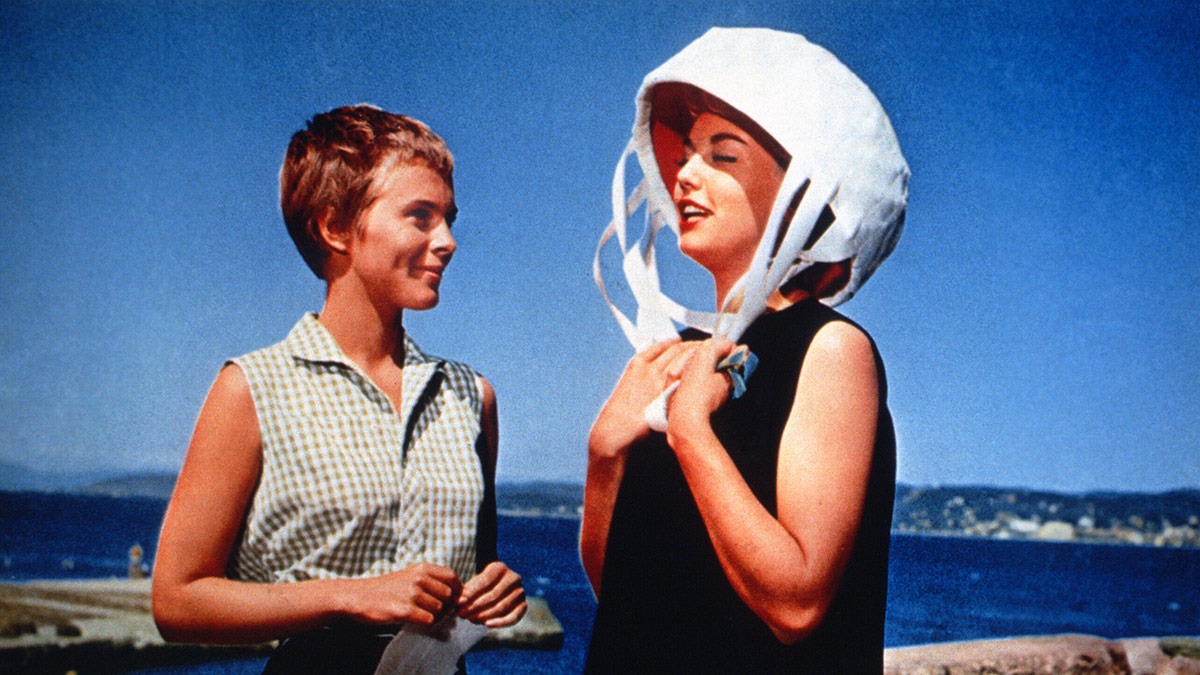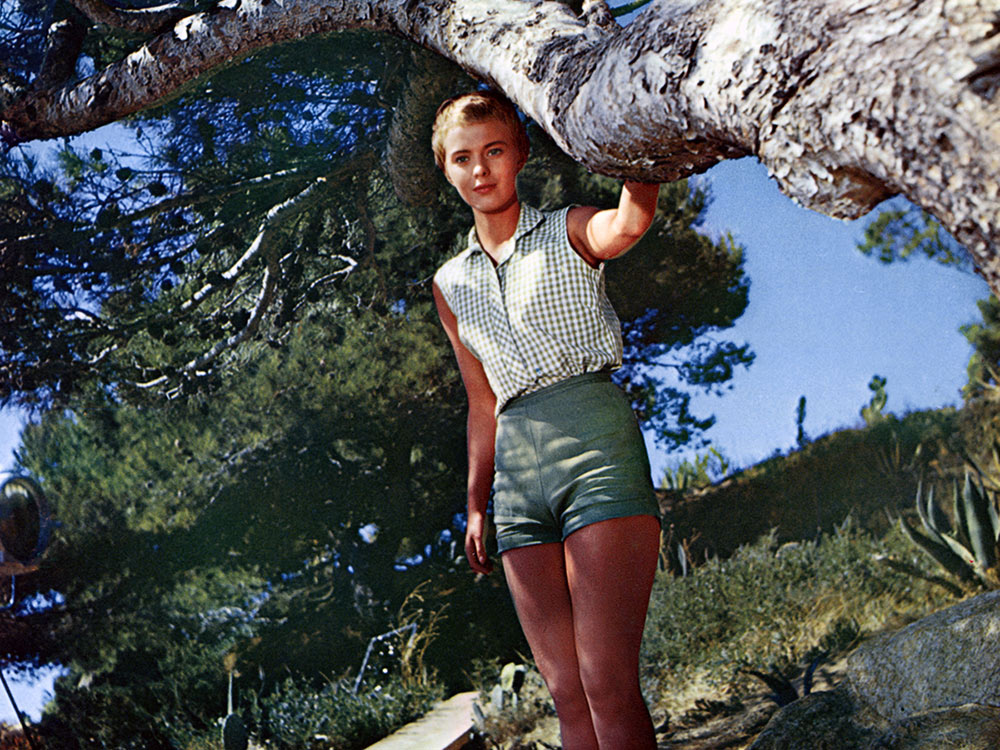
(c) Photofest / Getty Images
“Bonjour Tristesse” The lives of Jean Seberg and Françoise Sagan unintentionally overlap
2021.05.10
Space of Absence: Introduction
Otto Preminger uses a summer villa overlooking the sea on the Riveira as a breezy stage set. Cecil frequently moves between the open balcony and the interior. The spatial design here is aimed at capturing the dynamic movements of the actors in the frame. This spatial design is used extensively in the musical scenes. The musical scenes in this film are the happy culmination of Otto Preminger's complex, flowing camerawork and vast stage sets.
However, this happy setting is quickly reversed, just as Cecil's emotions change. In fact, the reversed world is a better representation of the cold, heartless world that Otto Preminger has depicted up until now.
The heroine of "Angel Face" wanders, groping her way through the dark corridors of a mansion after everyone has left. Or the heroine of " Bunny Lake is Missing " (1965), climbing the stairs while searching for her missing daughter. Otto Preminger places the heroine, who has fallen into anxiety neurosis, in a vast space, a vast frame. In that vast space, the heroine gropes for "absence." The audience feels fear in that space.

“Bonjour Tristesse” (c)Photofest / Getty Images
In "Bonjour Tristesse," the world is reversed while remaining bright. Jean Seberg is not a heroine illuminated in the darkness, but a heroine illuminated under bright sunlight, which makes her special. As Raoul Coutard, who served as the cinematographer for many of Godard's works, including "Breathless," said, Jean Seberg "has a facial structure that collects light." Cecile innocently plays in the light. With the emotions of others. And even with her own emotions.
Jean Seberg felt sorry for Françoise Sagan, who showed up on the set. She was a female writer about her own age, always surrounded by people and never allowed to be alone, but who roamed around like a kitten, always looking for someone to need her.
Françoise Sagan has flatly denied that there are any autobiographical elements in Bonjour Tristesse, but Otto Preminger, who had known her for several years before filming began and would often go on drives with her, must have observed her closely.
Speed freak Françoise Sagan has her first accident, and the film also serves as an introduction to Jean Seberg's later, extraordinary life.
In a tragic way, where life transcends fiction, Jean Seberg and Françoise Sagan's real lives overlap, unwillingly. The chansons sung by Juliette Gréco in this film will unintentionally resonate in the present world, now that they are gone, as a requiem for the nameless feelings that these two women with extraordinary talents held. By confirming their absence, we feel their presence.
"My smile without laughter, my kiss without love, my bittersweet sadness when I think of someone I can't forget" ~Bonjour Tristesse~
Text: Daiji Miyashiro (maplecat-eve)
Movie criticism. Contributed commentary to Eureka's ``Wes Anderson Special'', Real Sound, Toshio Matsumoto special pamphlet, etc.
(c) Photofest / Getty Images

